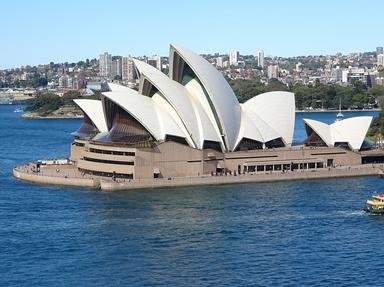Quiz Answer Key and Fun Facts
1. Coffs Harbour is a coastal town located approximately midway between the capital cities of Brisbane and Sydney, on the east coast of Australia. In which state is Coffs Harbour located?
2. Before tourism and other industries took off in a major way in Australia, and particularly so in this wilderness area, upon what was Coffs Harbour's earliest economy based?
3. Many regional towns in Australia have rather huge structures built on their outskirts, which are meant to represent a prevailing well known feature of each area. What gigantic structure does Coffs Harbour have constructed on the approach to its town?
4. Which well known mountain range, which basically lies all the way down the east coast of Australia, reaches its closest point to the Pacific Ocean at Coffs Harbour?
5. Sawtell, which was once a small village to the immediate south of Coffs Harbour, has now been absorbed into the larger town itself. How did Sawtell's initial settlement come about?
6. The Coffs Harbour jetty is a site that is very much a part of the town's early history. What was the initial reason behind its construction?
7. From 1847 until 1861, Coffs Harbour was known as Korff's Harbour. Why was the name changed at that time?
8. Dorrigo, a little village to the west of Coffs Harbour, and set in the most beautiful location in the world, was once on the short list for what?
9. Nana Glen, a peaceful location just to the north west of Coffs Harbour, was named after which local reptile?
10. Also in the Coffs Harbour region, and not far from Nana Glen, the next village of Glenreagh boasts a very interesting, and rather sad, "burial" site. What is stored there?
Source: Author
Creedy
This quiz was reviewed by FunTrivia editor
Tizzabelle before going online.
Any errors found in FunTrivia content are routinely corrected through our feedback system.
